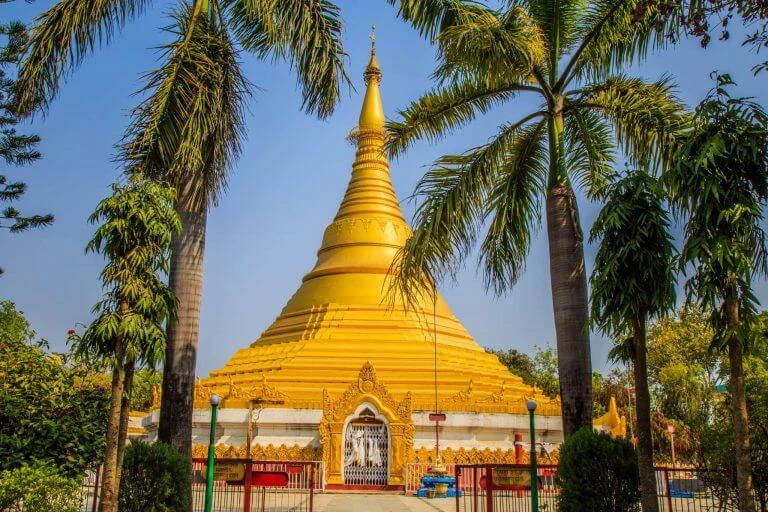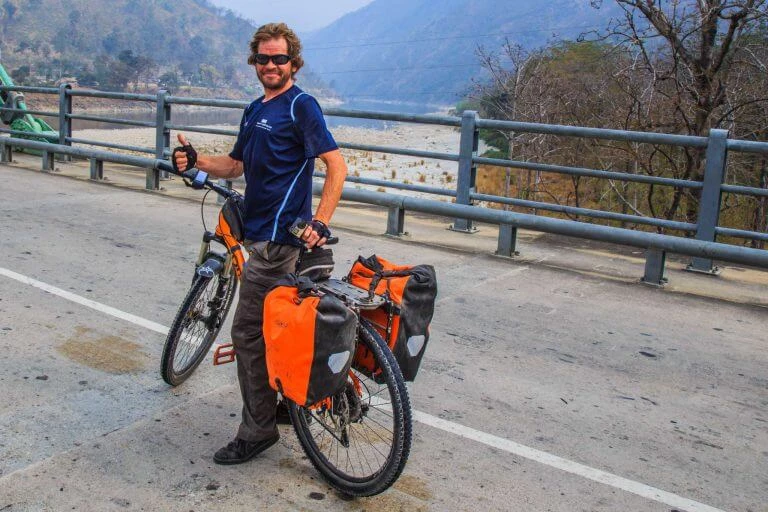Namaste
Sunday, April 2, 2017
- Three Continents
When leaving Cape Town I felt great relief. Finally out of Africa! In Doha, the capital of Qatar, there was a stopover and from there it went on to Kathmandu in Nepal. Actually, I wanted to fly to India, but in Cape Town it would have taken 30 days to get a visa. The Nepalese authorities are not so squeamish. You can easily do the whole visa process at the airport.
The culture shock followed right at the beginning when I had to find a way through the city. The traffic is very different here as in Africa. It all looks chaotic at first but pretty soon I got the hang of it and it's even fun for my taste (it feels almost like playing Grand Theft Auto).
I was able to extend my Nepal Visa for 5 months. Also, the Indian Embassy here in Kathmandu is much less complicated than its representation in South Africa. Within 10 days I was able to apply for my visa through an agency. The interim time I spent with trips to the city.
Kathmandu is the political, cultural center of Nepal and by far the largest city in the country. The valley with the three royal cities of Kathmandu, Patan and Bhaktapur is classified by UNESCO since 1979 as a World Heritage Site. As luck would have it, the Holi Festival was held on March 12th. Holi is one of the oldest festivals. On this day, all barriers seem to be overridden by caste, gender, age and social status. It is celebrated hilariously and you sprinkle and sprinkle each other with dyed water and colored powder, the gulag.
Unfortunately, the earthquake in 2015 destroyed a lot here in Kathmandu and the damage is still visible. The earthquakes in Nepal in 2015 occurred in April and May 2015. The first major and strongest earthquake affected with a magnitude of 7.8 MW on 25 April 2015. The epicenter was located about 80 kilometers northwest of the capital Kathmandu. One day later there was an aftershock of magnitude 6.7. Until mid-June 2015, many aftershocks followed. The earthquakes are considered the deadliest catastrophe in the history of Nepal. According to the Nepalese government, nearly 8,800 people died in Nepal as a result of the earthquake.
Some sights (such as the 61.88m high Dharahara Tower) are completely destroyed but you can still marvel at many of them. That's exactly what I missed so much in Africa. Finally, once again marvel at history, culture and art and not every day only mud huts and a few dilapidated colonial buildings. In addition, the Nepalese are enormously friendly people. Right from the beginning, I liked the country enormously well. From some hills you can enjoy really beautiful views over the Kathmandu valley and the relatively high altitude (about 1'300 m above sea level) makes it relatively cool.

After I had my India Visa in my pocket I wanted to get back in the saddle as fast as possible. In Nepal, there are only a few regions that can be reached by bike. However, one of my dream destinations for a long time already lies in the Indian part of the Himalayas. That's why I decided to go west for the first time. There is only one way, namely on the highway in the lower Teraigebieten.
Jock (a Scottish cyclist whom I met in Kathmandu) recommended to take the road from Kathmandu via Daman to Hetauda. This was a good introduction to the mountains. Almost every piece of land is farmed here on a grand scale. Partly the terraced fields look like someone has drawn a relief into the landscape.

After 5 days I finally reached Lumbini. According to tradition, Lumbini is the birthplace of Siddhartha Gautama, the founder of Buddhism. The Pilgrim Center with its Peace Park was classified by UNESCO as a World Heritage Site in 1997. On the grounds of the Peace Park of Lumbini are numerous pagodas and temples of various Buddhist countries in Asia. It could also be called a diplomatic quarter of Buddhism. Some of them are really impressive in their construction.
What bothers me in Nepal, are the entrance fees for foreigners. These must always pay at least four times the actual price. In Europe, we would be called racists right away if we were to deal with our foreign tourists. It took me almost a full day to visit most of the temples by bike.

The supply along the highway is great. As a result you do not need to carry so much water and food with you. In addition, there is always a place to camp.
On the first day after Lumbini, a motorcyclist stopped me. Frank is from Germany and has traveled to India and Nepal several times. He's on his way to Bardia National Park and recommended me to stop there. Two days later, I arrived at Wild Trak Adventure Lodge. John, the owner, is a zoologist from England. He specializes in this area here. His business partner Sitaram took us into the park for a day. You can walk here through the park (which is impossible in Africa).
The National Park is home to populations of rare wildlife such as Bengaltiger, Barasingha deer, Asian elephant, stag-goat antelope, Ganges-Gaviale, swamp crocodiles and Ganges dolphins. In addition, rhinos occur in the area, which were relocated from the Chitwan National Park. In total there are more than 30 mammal species and over 230 bird species in the national park.

In fact, I got to see a tiger. Frank wanted to stay at the observation point while I took a walk with Sitaram. Suddenly a male tiger came around the corner. All three were pretty scared. The tiger roared once and ran away. There was no time for a photo. Seeing such a majestic animal in the wild is truly impressive.
At the lodge I met Nick and Simon. Nick travels through India and Nepal for a few months. Simon has been traveling with his mountain bike through India and Nepal for several years. He invited me to spend a day together with him on the Indian border to cycle. Of course, with his light luggage he is a lot faster than me. I really enjoyed the time in the lodge. From Frank and Simon I got some very helpful tips for the journey through India.
Nick accompanied us the next day a little way with his motorcycle. Simon set a good pace. We kept on the way in the tea shops to recover from the heat (38 ° C) a little. In the evening I had to say goodbye to him again. He is traveling without a tent and I really wanted to spend another night outdoors before going to India.

The border crossing in Mahendranagar went pretty fast. Now it's off to the Indian Himalayas. However, I am already looking forward to coming back to Nepal. I really liked the country and the people.
In Africa I have missed so many things that I could just enjoy here again. Only the kids with their eternal "Bye Bye" calls sometimes got on my nerves a bit. But at least they do not throw stones or run after forever. Namaste Nepal!